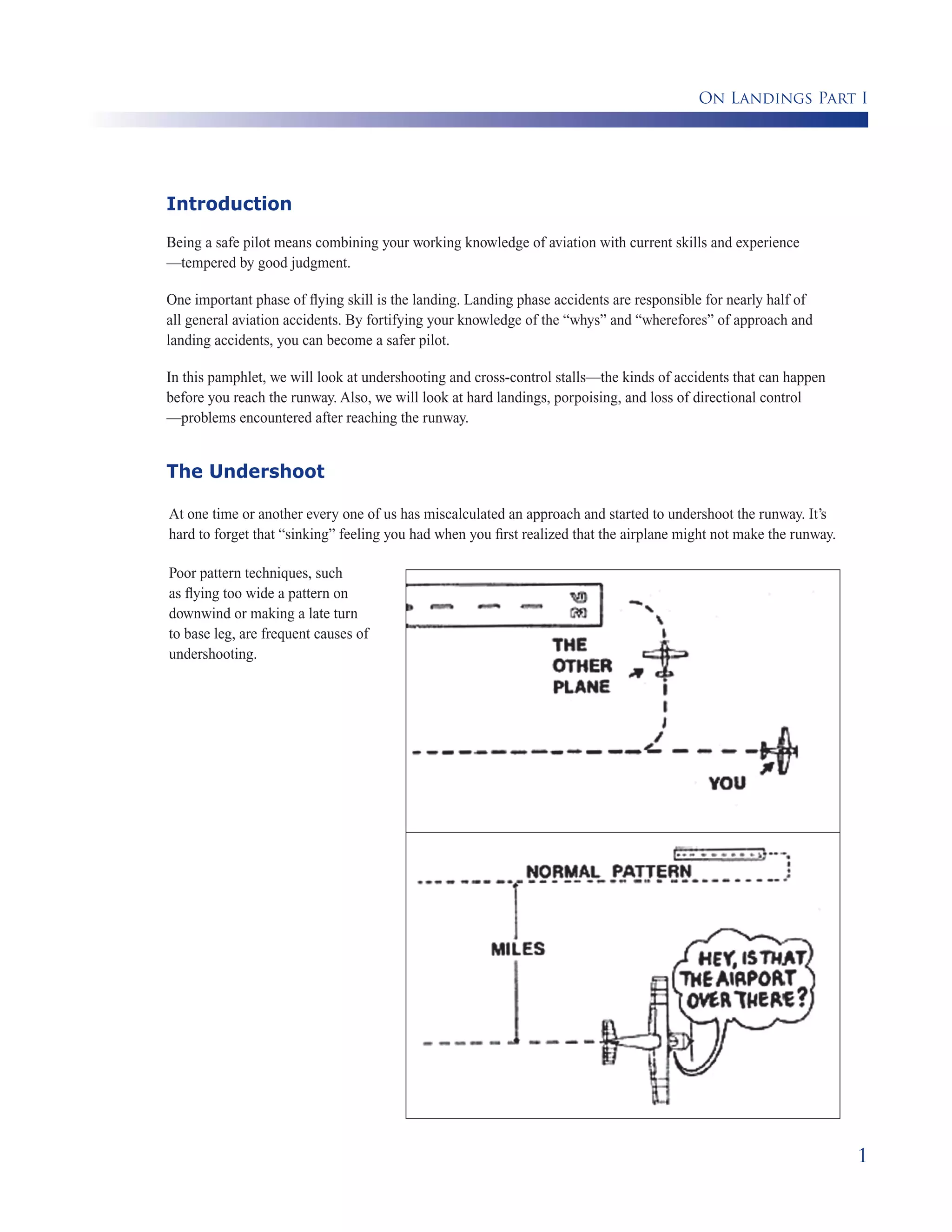Porpoising Aircraft - Corey is an Embraer 175 First Officer for a regional airline. He graduated as an aviation major from the University of North Dakota, and he's been flying since he was 16. You can reach him at corey@boldmethod.com.
This usually results from not transitioning your eyes down the runway during the flare. If you stare at the runway directly in front of the nose of your plane, you won't be able to use your peripheral vision as much as to judge the last few feet of your flare.
Porpoising Aircraft

Transition your eyes about 4 centerline stripes down the runway to judge your touchdown more easily. You've probably heard an instructor say "pitch for airspeed, power for altitude." If you're slow on final, you should lower the nose slightly to regain airspeed.

Corey Komarec
However, if you don't also add power, you could end up low on the final. In most GA aircraft, you need to start reducing power before you get within a wingspan distance from the ground. Why?
Ground effect. If you come into the flare too fast, the airplane won't settle onto the runway, because induced drag decreases in ground effect. This is one of the negative effects of floating. If you start flaring when the airplane doesn't want to land, well...the airplane will start climbing out again.

What you need to do is to again, hold it off the runway in a nose-high attitude until it's ready to settle back down. And if the balloon is excessive, go around! A porpoise landing is a bounced landing that, if not recovered, results in your plane touching down nose-first.
If you let it continue, it will set your plane off into a series of "jumps" and "dives", like a real porpoise. Porpoise landings can happen when you're flying too fast during touchdown, or if your descent rate is too high at touchdown.

Late Flare
This is caused by the complete opposite reason - looking too far down the runway. If you do this, you won't have a good perception of how close you really are to the runway. Don't look so far, instead, transition your eyes about 4 centerline stripes down the runway.
This is caused by inadequate or excessive rudder usage during a crosswind landing. If you end up landing in a drift, don't jam the opposite rudder in to correct for the drift. Instead, straighten the nose wheel first, and then gradually bring the airplane back to the centerline.

Excessive rudder deflection at high speed could cause you to skid, strike a wingtip, or go off the runway. Being high on final is often caused from using too much power. As mentioned before, "pitch for airspeed, power for altitude".
All you have to do is reduce some power and allow the plane to pitch down to maintain your approach speed. Once you're back on the glide path, return the power to your "home" setting. Bouncing can be caused by a firm landing.

Slow Final Approach
Bump up the power a little bit to stop the bounce, and hold the airplane off the runway in a nose-high attitude. Let your plane settle back to the runway when it's ready, and if the bounce is excessive, go around.
porpoising plane, f1 porpoising explained, porpoised landing, f1 porpoising effect, pilot induced oscillation, f1 car porpoising, bounced landing, personal small flying crafts